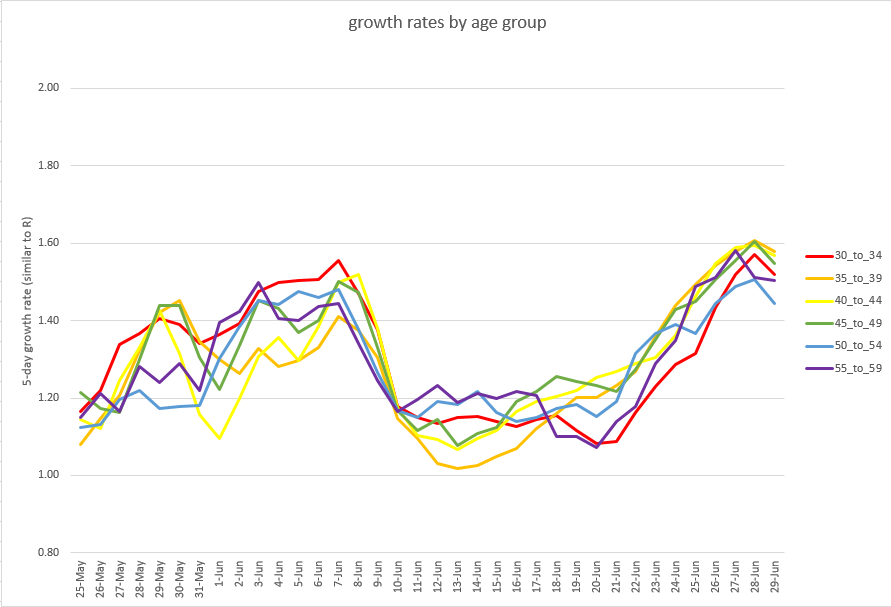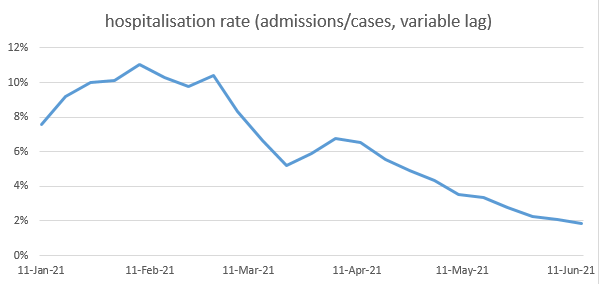
Today we got @PHE_uk’s latest weekly surveillance report which provides their age-stratified hospital admissions data. I can use this to extend my analysis of the hospitalisation ratio, as follows: 
https://twitter.com/PHE_uk/status/1410584256217243651?s=20

This shows that in the most recent week (admissions in 21-27 June), the ratio has dropped further, to around 1.5%. I can also extend my “fixed age mix” curve, in orange (see thread below for explanation of this) – which has dropped by a similar amount. 
https://twitter.com/JamesWard73/status/1409974473894285319?s=20

This implies that the most recent drop is “real” i.e. it’s caused by falls in hospitalisation ratios *within* each age group, not by changes in the age mix of cases. We can see this if we look at the hospitalisation ratios for each age group, as per the chart below: 

Here there are noticeable drops for the 65-74 and 75-84 age groups. And if we zoom in on the younger age categories, we can see similar patterns in the 25-44, 45-54 and 55-64 groups as well: 

It’s an interesting question as to what is causing the continued fall. An easy answer is “benefit of vaccines”, and that’s certainly a plausible part of the story in the younger groups – but perhaps less so in the older ones where 2nd doses were given a while back.
(although maybe we’re seeing, once again, that AZ works on a slow burn). Other effects that could be contributing are changes in case ascertainment (e.g. from more testing), and mix effects within age groups or driven by other factors. Other suggestions very welcome.
It’s also interesting to speculate on where the ratio will go from here. Personally I’d be surprised if it falls much further (e.g. to 1% or below) as we’ve already seen a lot of benefit from vaccines, partially offset by delta, and I can’t see what will drive it even lower.
More likely in my view is that it stabilises around this level, and then starts to drift back upwards gently (as age mix effects unwind to some extent, due to vaccinating younger groups). If that’s the case then we should see admissions growth pick up,
…becoming more closely linked to the growth rate in reported cases. And there is just the hint of this starting to happen in the latest admissions data for England, superbly analysed as usual by @BristOliver here:
https://twitter.com/BristOliver/status/1410609844583686148?s=20
The growth in admissions is not good news, but if the ratio stabilises then it does at least mean we can forecast the impact of this wave with a bit more confidence. Then all we need is an explanation for why R is stubbornly high, and normal modelling service can resume. /end
• • •
Missing some Tweet in this thread? You can try to
force a refresh















